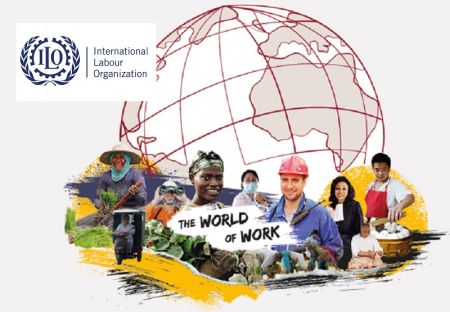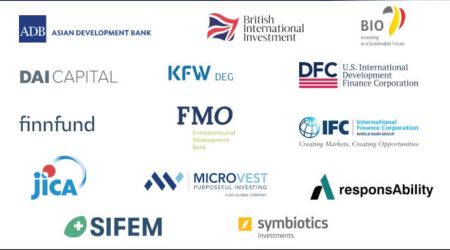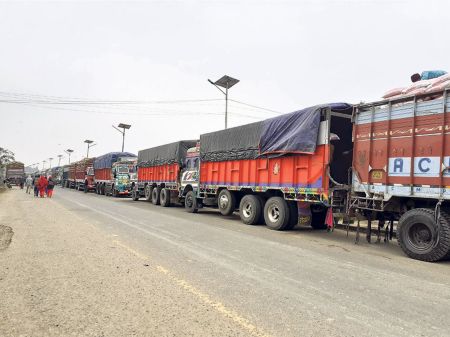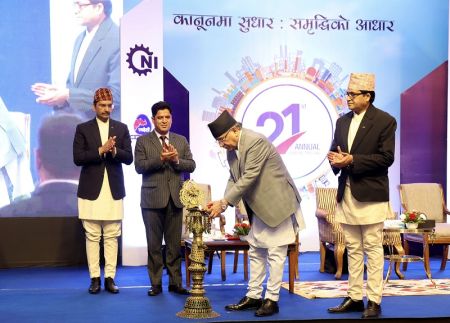The future holds bright prospects for workplaces in terms of innovation and productivity.
--BY SAURAV POUDYAL
Evolution is a dynamic term. From Charles Darwin theorizing the development of organisms, to the present-day introduction of Artificial intelligence (AI) technologies in our daily lives, evolution is part of anything and everything around us. For billions of years, biological evolution has been accompanied by behavioural evolution in the living world. In the present-day context, with the introduction of AI technologies in our daily lives, we can say that evolution is not only confined to biological terms, but it is also prevalent in the artificial intelligence that we humans have created. Today, our daily lives are dependent on AI in the form of smart phones, accessories, transportation, homes and even our workplaces.
With the development of technology, the way of life has drastically changed in recent times and it will remain a key factor in behavioural change as well as shift in skill sets ranging from individuals to organisations.
Every workplace is comprised of units performing specific tasks. Many of these tasks are automated or performed by machines whereas other aspects require human involvement. With time the manual human interventions are decreasing and more and more automation are being introduced in the workplaces as we know it. With the rapid advancements in AI technology, and its adoption in workplaces, it cannot be overlooked that the demand for physical and manual skills will see a rapid decline in the near future.
So, does this mean that our workplaces will be overtaken by machines soon? Not really. Innovation is not about reducing headcounts in an organisation but making the operations of the organisation more efficient, simultaneously mitigating the risks involved. Accordingly, this shift will create new jobs but the nature of the demand for jobs in the market will change. Though the demand for physical and manual skills might decline, this shift will open avenues for high level skills that only humans possess. Hence, the challenge for organisations is to understand the shift in the ways work is done and accordingly build the workforce of the future.
The shift in workforce and skill sets
The adoption of AI technologies in the workplace will be pivotal in transforming the workplace in terms of higher human-machine interactions resulting in higher productivity. Technological skills, emotional and cognitive skills are sure to be in high demand thereby posing companies with a new challenge- rethinking ways to reorganise work within the organisations. Advanced technologies require people who understand how they work and can contribute to innovations. From the first industrial revolution of the late 18th and early 19th century to the advanced workplace of today, organisations have seen substantial changes in the required skill sets of their workforce. Technological skills have been in demand throughout. With the rapid enhancement in AI technologies in the recent past, this demand is expected to accelerate at a rapid pace. Similarly, this will fuel the demand for social, cognitive and emotional skills such as empathy, creativity and advanced communication. These are such skills that only humans possess and machines are still a far cry from mastering.
Although there will be heavy investments in technology and introduction of AI technologies in a majority of the workplaces, the demand for physical and manual skills cannot be completely discounted. Although declining in rate, the demand for such skills will still be prevalent. For example, manual labour in a packaging plant might get replaced by automated systems, but the demand for physical skills in certain industries such as health care, nursing and education will still be in existence. This shift in demand will not be constant across industries. If we consider the two generic aspects of the business environment, namely- manufacturing and trading and the service industry, this shift in skill set demand will be at a different trajectory for each of these segments.
Early signs of disruption in workflow in the manufacturing and trading sectors are already being felt with the introduction of AI technologies in these sectors. Introduction of complex automation and AI in production units is opening new avenues in analytics, production, sales and marketing and the overall product cycle including trading. This will eventually result in a decline in the demand for manual and physical skills. On the other hand, demand for skilled professionals such as engineers, sales representatives and managers will grow to meet the demand for advanced communications and negotiations, creativity, social, cognitive and emotional skills.
The service industry will equally be impacted. In terms of banking and insurance, there will be a decline in demand for roles such as tellers, data entry clerks, accountants, etc. as these roles will be replaced by AI technologies and automation. On the other hand, the demand for technology experts and other professionals with expertise in specific functions will grow. Similarly, demand will surge for roles that require direct client interactions and relationship managements which require a humane touch. The case will be similar in health care and other service industries. Hence, the decline in demand for manual physical skills might be higher in manufacturing and trading industries as compared to the service industry.
Adaptation- the key to building a robust work force of the future
Adaptability, in direct terms can be defined as the ability to change according to the environment. As it cannot be denied that the future will be driven by innovations, organisations will be bound to reshape themselves to harness the innovations to their full advantage. This will mean that the organisations will have to reconsider their corporate structures, processes and approach to work. They need to reassess the current talent pool they have and the changes this pool must go thru as well as the new talent they might need as per the required skill set for running their businesses. Thus, the challenges that this shift will bring up will be for both the existing talent pool that a company has and the new talent pool that they need to acquire. For the existing talent pool, a cultural shift in the organisation will be imperative. This will mean adoption of a culture of continuous learning options for the existing workforce. Similarly, organisations will be challenged with the task of identifying new talent with technological and emotional and cognitive skill sets.
This course of adaptation will not be an overnight event but a gradual process. Organisations will have to work on areas of training, re-deployment as per the skill set of the workforce and hiring of new talent. On the other hand, organisations should perform a cost benefit analysis and consider contracting as an option to rapidly acquire the desired skill sets without worrying about their intellectual property going into attrition. Another important aspect in this course of adaptation might be releasing certain parts of the workforce which can be significantly substituted by automation.
Building the workforce of the future
The future workplace will require a technically sound workforce. This shift will not spare the workforce based on their hierarchy or skill set. From leaders to the lower level employees, everyone will have to work themselves up to be competent. Learning new skills, familiarising with the changing technology and being open to change will be the key attributes of the future workforce. The leaders should provide ample opportunities and resources for their workforce to learn. This will result in a more adaptive talent pool. On the other hand, organisations will have to look into redesigning their structures and processes. Having an adaptive workforce will not be enough unless the same sentiment is imbibed in the organisation at a cultural level.
Technology will be the foundation of the future, and we can only speculate what it may hold. However, the present is where organisations can work to ensure that they are ready for the shift that is bound to happen. Hence, developing tomorrow’s talent should be the top priority today. Leaders need to collaboratively work with organisations, the educational system and the government to identify future talent in the workforce. This adaptive approach will help to strengthen the source of the workforce of the future starting from reforms in educational systems to restructuring the foundations of the organisations to be future ready. Thus, it is imperative that the country not only should focus on improving the overall literacy rate, but also the digital literacy rate of its citizens.
For a nation like ours, addressing the challenge that will be faced due to this shift is even more relevant. Reforms in the education system to structuring of organisations with a futuristic approach have become even more important. Traditional approaches in education and organisational structures are already being deemed obsolete in developed worlds. Without fostering a generation that can contribute to the pace of development, a nation like ours cannot attain the standing that it hopes to secure in the future. Whilst developing modern infrastructures and uplifting the standard of living are always important, without investing, nurturing and developing a globally competent citizen, a nation cannot be called developed in the truest terms.
The author is the Head of Bancassurance at Standard Chartered Bank Nepal Limited. The views presented in the article are of the writer himself and do not represent the organisation that he is associated with.






















